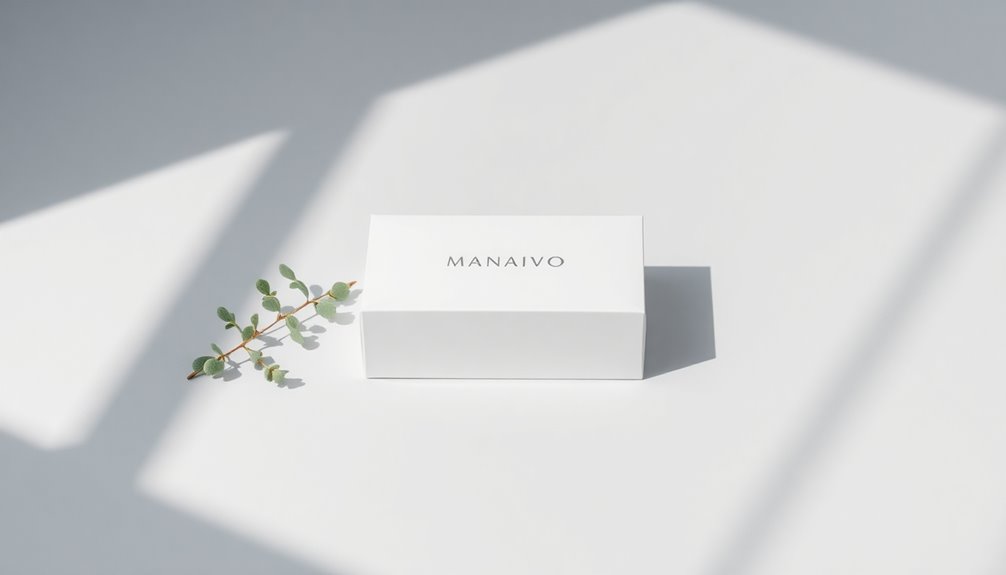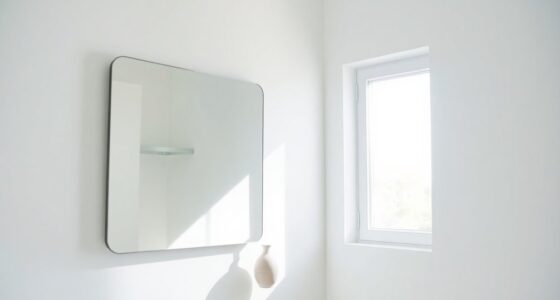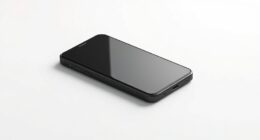Minimalist packaging design embodies elegance through simplicity. It focuses on clarity and intentionality, stripping away distractions while using clean lines and ample negative space. A neutral color palette enhances sophistication and reduces clutter, making product features stand out. By adopting sustainable materials, it aligns with eco-friendly practices, appealing to conscious consumers. This approach not only enhances the unboxing experience but also boosts brand visibility. Discover how to implement these principles for your own packaging.
Key Takeaways
- Minimalist packaging emphasizes clarity and simplicity, creating an elegant aesthetic that attracts consumers.
- A limited color palette and clean typography enhance sophistication while maintaining focus on the product.
- Utilizing sustainable materials showcases environmental responsibility, appealing to eco-conscious consumers.
- Generous negative space and clean lines create visual balance, improving the overall unboxing experience.
- Effective minimalist design fosters brand recognition and stands out in a crowded marketplace, enhancing consumer engagement.
The Essence of Minimalism
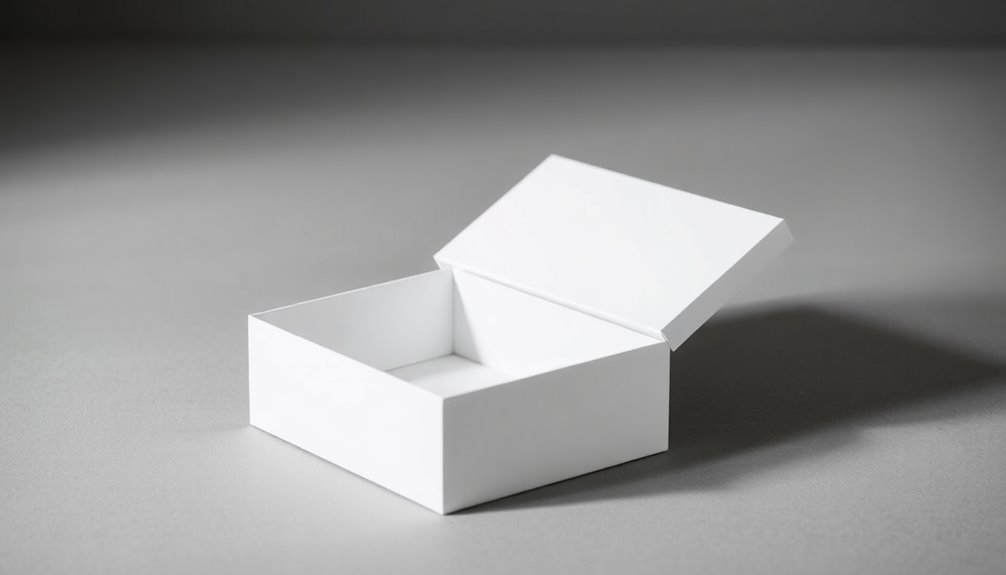
Minimalism embodies clarity and intention in packaging design. In this approach, you'll notice a focus on simplicity and clarity, stripping away distractions to reveal the product's essence.
Clean lines and generous negative space create a visual balance that fosters a deeper connection between you and the product, enhancing brand trust and loyalty. A limited color palette, often featuring neutral tones, reflects the brand identity without overwhelming you, adding sophistication to the overall look.
Additionally, minimalist packaging often utilizes high-quality materials, like recycled cardboard or biodegradable options, aligning with your values of environmental responsibility. This trend highlights changing consumer preferences, favoring elegance and clarity over excessive graphics and messaging, making your experience more enjoyable and meaningful. Furthermore, reduced environmental waste from minimalist packaging contributes to sustainability efforts.
Benefits of Minimalist Design
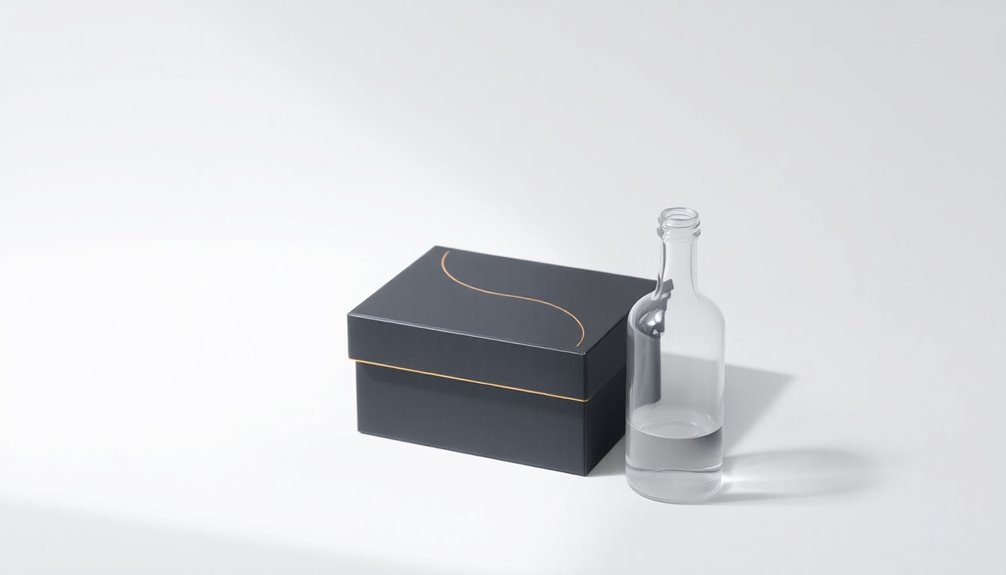
When you choose minimalist packaging design, you not only enhance the product's appeal but also create a more engaging experience for consumers. This approach highlights key product features, making them easily recognizable, which boosts consumer understanding and interest.
By embracing sustainable packaging, you notably reduce environmental impact, appealing to eco-conscious consumers. The streamlined aesthetic of minimalist design stands out in a crowded marketplace, enhancing brand visibility and recognition.
Simplified designs allow for quicker decision-making, potentially increasing sales. Plus, the unboxing experience becomes more enjoyable and sophisticated, fostering stronger customer loyalty. Additionally, incorporating natural elements into packaging can further promote a sense of tranquility and connection with the product.
Key Elements to Consider
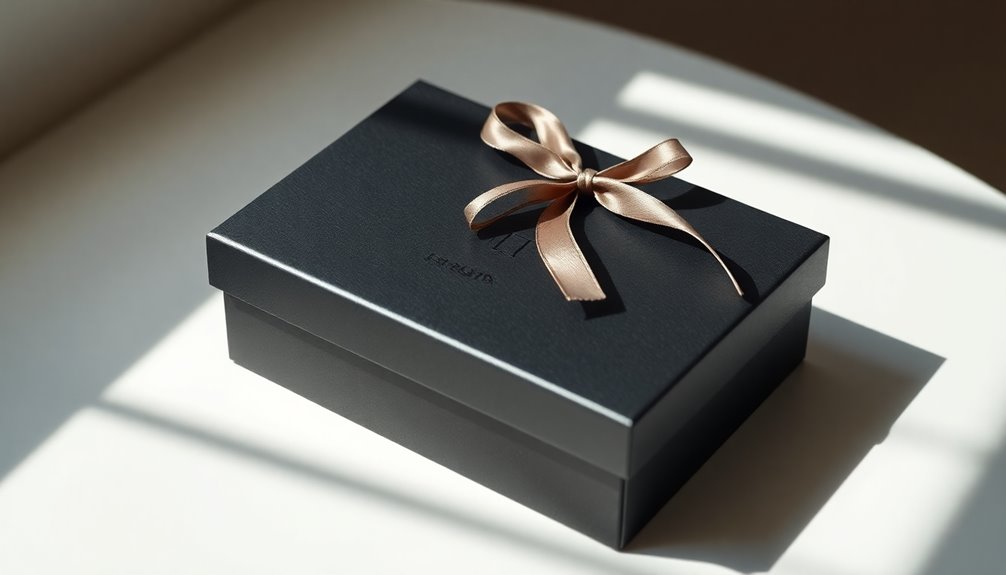
Creating a minimalist packaging design involves careful consideration of several key elements that contribute to its effectiveness.
Focus on these essential design elements:
- Neutral Color Palette: Use a neutral or single-color palette to enhance sophistication and reduce visual clutter.
- Clean Typography: Implement clean, easy-to-read typography, preferably sans-serif fonts, to guarantee essential information is accessible.
- Sustainable Materials: Opt for sustainable, high-quality materials like recycled cardboard or biodegradable plastics to reflect your brand's commitment to eco-friendly practices.
- Functionality: Verify that your product packaging not only looks good but also protects the product and enhances the unboxing experience. Including essential oil safety measures can further ensure that the packaging aligns with health-conscious consumer preferences.
Real-World Examples
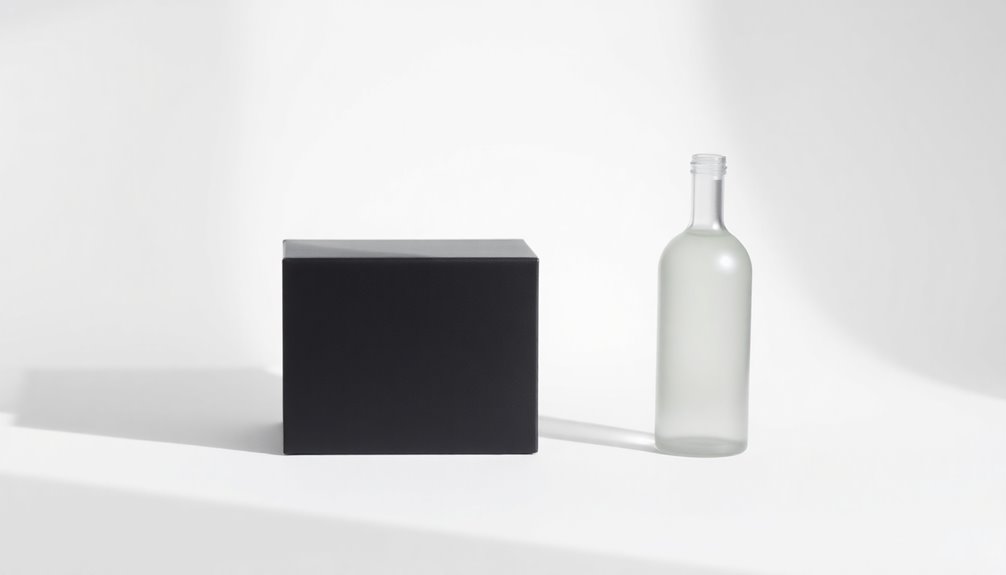
Effective minimalist packaging shines in various real-world examples, demonstrating how simplicity can elevate a brand's identity.
Take Apple products, for instance; their clean lines and sleek white aesthetic enhance product visibility and reinforce brand identity.
Glossier embodies beauty and simplicity with pastel-colored packaging that creates an enjoyable unboxing experience, fostering a strong consumer connection.
MUJI emphasizes functionality and minimal design, showcasing products without excessive branding, appealing to environmentally conscious consumers.
Coca-Cola's bold red and white color palette makes it instantly recognizable, conveying a classic, timeless appeal.
AQUA highlights purity and quality through its sleek bottle design, using minimalism to focus on essence without distractions.
These brands illustrate how a thoughtful design approach can redefine the packaging industry. Additionally, the trend towards eco-friendly materials in packaging reflects a growing consumer consciousness around sustainability.
Implementing Minimalism in Packaging
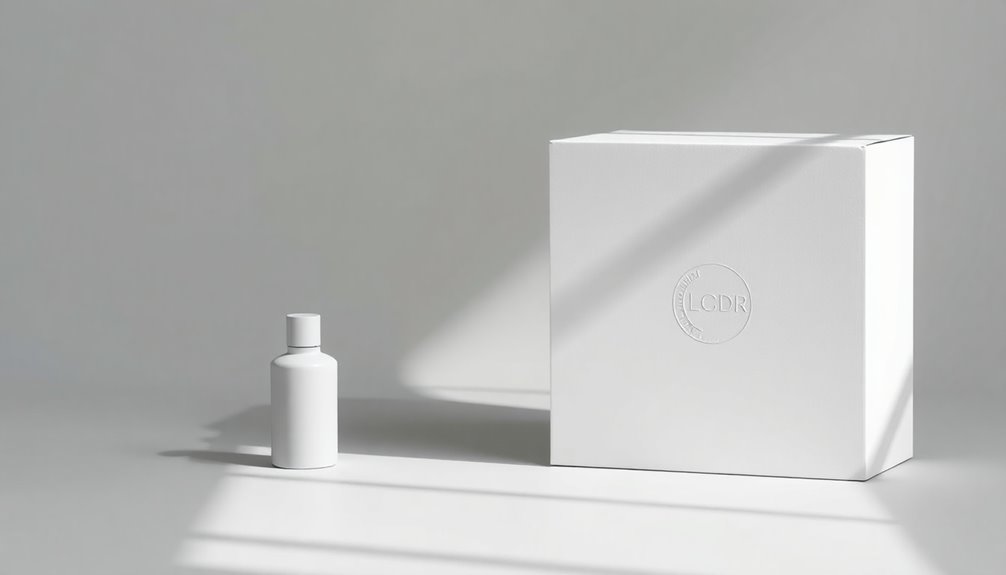
Minimalist packaging isn't just about aesthetics; it's a strategic approach that can considerably impact your brand's identity and consumer perception.
Minimalist packaging transcends mere aesthetics, shaping brand identity and influencing consumer perceptions in profound ways.
To effectively implement minimalism in your packaging design, consider these key elements:
- Color and Typography: Focus on essential colors and clean fonts that represent your brand identity.
- Materials: Choose recyclable or biodegradable materials to appeal to environmentally conscious consumers.
- User Experience: Create functional designs that enhance unboxing experiences while maintaining simplicity.
- Cohesion: Guarantee that all aspects—design, materials, and messaging—convey a clear and cohesive message.
Additionally, embracing risk-taking strategies in your design can lead to innovative packaging solutions that stand out in the market.
Frequently Asked Questions
How Does Minimalist Packaging Impact Consumer Purchasing Decisions?
When you see minimalist packaging, it often grabs your attention. You might feel that less clutter communicates clarity and quality.
The simplicity can make it easier for you to focus on the product itself, enhancing your perception of its value. You may also associate minimalist designs with modernity and sophistication, which can influence your purchasing decisions.
Ultimately, it creates a memorable experience that resonates with your desire for straightforward, elegant choices.
What Materials Are Best for Minimalist Packaging?
When it comes to materials for minimalist packaging, think of simplicity as your guiding star.
You'll find that paper, cardboard, and biodegradable plastics are excellent choices. These materials not only reduce waste but also convey a clean, modern aesthetic.
Opting for sustainable options can enhance your brand's image while appealing to eco-conscious consumers.
Can Minimalist Design Work for All Product Types?
Yes, minimalist design can work for various product types. It emphasizes clarity and functionality, allowing you to highlight your product's key features without distractions.
Whether you're packaging food, cosmetics, or tech gadgets, a clean aesthetic can appeal to consumers seeking simplicity and elegance.
Just make certain the design aligns with your brand identity and resonates with your target audience.
With the right approach, minimalism can enhance your product's appeal across different categories.
How Do I Transition From Traditional to Minimalist Packaging?
Shifting to minimalist packaging is like shedding layers in spring; it reveals your product's true essence.
Start by evaluating your current designs and identifying unnecessary elements. Simplify your color palette and choose materials that reflect sustainability.
Focus on clear, concise messaging that highlights your brand's core values. Test prototypes to guarantee functionality and appeal.
With each step, you'll embrace a cleaner, more sophisticated aesthetic that speaks volumes with less.
What Are Common Mistakes in Minimalist Packaging Design?
When you plunge into minimalist packaging design, you might overlook the importance of brand identity and clarity.
It's easy to make packaging too simplistic, losing essential information. Avoid cluttering your design with unnecessary elements, as that contradicts minimalism.
Don't forget about functionality; even the simplest designs must protect the product.
Finally, guarantee your color palette and typography align with your brand, or you risk diluting your message.
Conclusion
In a world full of noise, embracing minimalist packaging can truly set your brand apart. As the saying goes, "less is more." By focusing on simplicity, you not only enhance your product's appeal but also convey elegance and sophistication. When you implement these design principles, you'll create a lasting impression on your customers. Remember, the beauty of minimalism lies in its ability to communicate your brand's essence without overwhelming the senses. Keep it simple, and watch your brand thrive.
